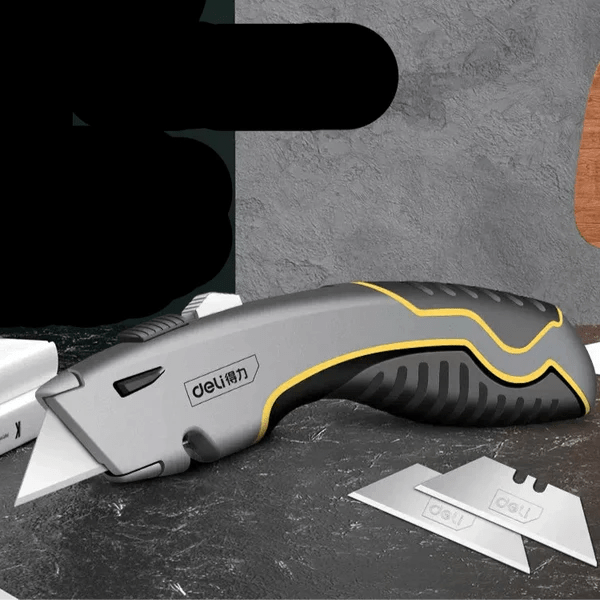
Cutting Through the Clutter: Everyday Uses for an Alloy Utility Knife & Box Cutter
Share
Introduction
In a world filled with packages, projects, and repairs, having the right cutting tool at hand can make all the difference. The Alloy Utility Knife — often called a box cutter — is a small but mighty tool that punches far above its weight. It’s not just for opening cardboard boxes; it’s an everyday companion for DIY projects, home organization, and even creative hobbies.
If you’ve ever struggled with dull scissors or made a mess with the wrong blade, you already know the value of having the right tool for the job. This article will show you how an alloy utility knife can simplify tasks, save you time, and keep you prepared for almost anything.
What Makes an Alloy Utility Knife Special?
An alloy utility knife is built for durability, precision, and safety. The handle is typically made from strong, lightweight metal alloys that provide a firm grip without being too heavy. The replaceable blade ensures you always have a sharp edge, while the retractable mechanism keeps it safe when not in use.
Key benefits include:
- Strength: Alloy handles resist bending and wear.
- Versatility: Suitable for cutting cardboard, rope, plastic, leather, and more.
- Portability: Compact enough to fit in a pocket or tool belt.
- Cost-Effectiveness: Replace blades, not the whole knife.
Everyday Uses You’ll Love
1. Opening Packages Like a Pro
No more struggling with stubborn packing tape. A quick slice with a sharp blade gets you inside in seconds.
2. DIY & Home Repairs
From trimming carpet edges to cutting insulation, your utility knife is a go-to for precise, controlled cuts.
3. Crafting & Hobbies
Paper crafting, leatherworking, or model-making all benefit from a clean, sharp blade.
4. Yard & Garden Work
Cut twine, open soil bags, and trim plant ties without reaching for bulky shears.
5. Travel & Moving
Perfect for breaking down moving boxes or cutting bubble wrap during a move.
Safety First
A utility knife is only as safe as its user. Follow these tips:
- Always cut away from your body.
- Retract the blade after every use.
- Replace dull blades — they require more force and are more dangerous.
- Wear gloves for heavy-duty cutting tasks.
Tips for Getting the Most Out of Your Knife
- Keep spare blades nearby so you can swap out a dull one instantly.
- Use a cutting mat or surface to protect floors and countertops.
- Choose the right blade type for your material — some are better for carpet, others for cardboard.
Why Choose an Alloy Handle Over Plastic?
Plastic handles are lighter but can crack or warp over time, especially under pressure. Alloy handles offer:
- Longer lifespan due to better durability.
- Better weight balance for precision.
- A professional feel in hand.
Conclusion
Your Alloy Utility Knife & Box Cutter is more than just a tool for mail day — it’s a reliable sidekick for countless tasks at home, at work, or on the go. With proper care, it will serve you for years, making every cut clean, easy, and safe.
FAQs
1. How often should I replace the blade?
Replace it as soon as it starts tearing rather than slicing cleanly — usually after heavy use.
2. Can I carry it in my pocket?
Yes, but retract the blade fully and check local regulations for carrying cutting tools.
3. What materials can I cut with it?
Cardboard, plastic straps, rope, vinyl, carpet, leather, and more.
4. Are alloy utility knives heavier?
They’re slightly heavier than plastic but still lightweight enough for everyday use.
5. How do I dispose of old blades?
Wrap them in tape or use a blade disposal container before throwing them away.
